Turning My Collection of Paper-Strip Music Box Melodies into My Muro Box Library!
(Netherlands)
Turning My Collection of Paper-Strip Music Box Melodies into My Muro Box Library!
Hanneke Debie
(Netherlands)
Ever since the heyday of music boxes at the end of the 19th century, the basics of music boxes changed very little. Currently, they are either antiques with a sound that can fill a room, or toys to play a melody in your child’s bedroom.
But a few years ago, this changed.
A small Taiwanese startup decided to innovate music boxes once more and bring them into a new age.
And it is their product I will be writing about, the Muro Box.
In this article I will give you some background of myself, the creators of the Muro box, tell how the Muro Box works and share my impressions of this device.
A Bit about Myself
I am Hanneke, 40 years old and living in the Netherlands.
The first time that a music box really caught my eye was when I was visiting my grandparents. They have a large 19th century music box, an heirloom from my grandmother’s grandfather. One time they let it play a few songs, and I was delighted with the full and rich sound it produced. It was so different from the little music boxes I had known so far!
This stuck with me, and I wanted more of those rich music box sounds.
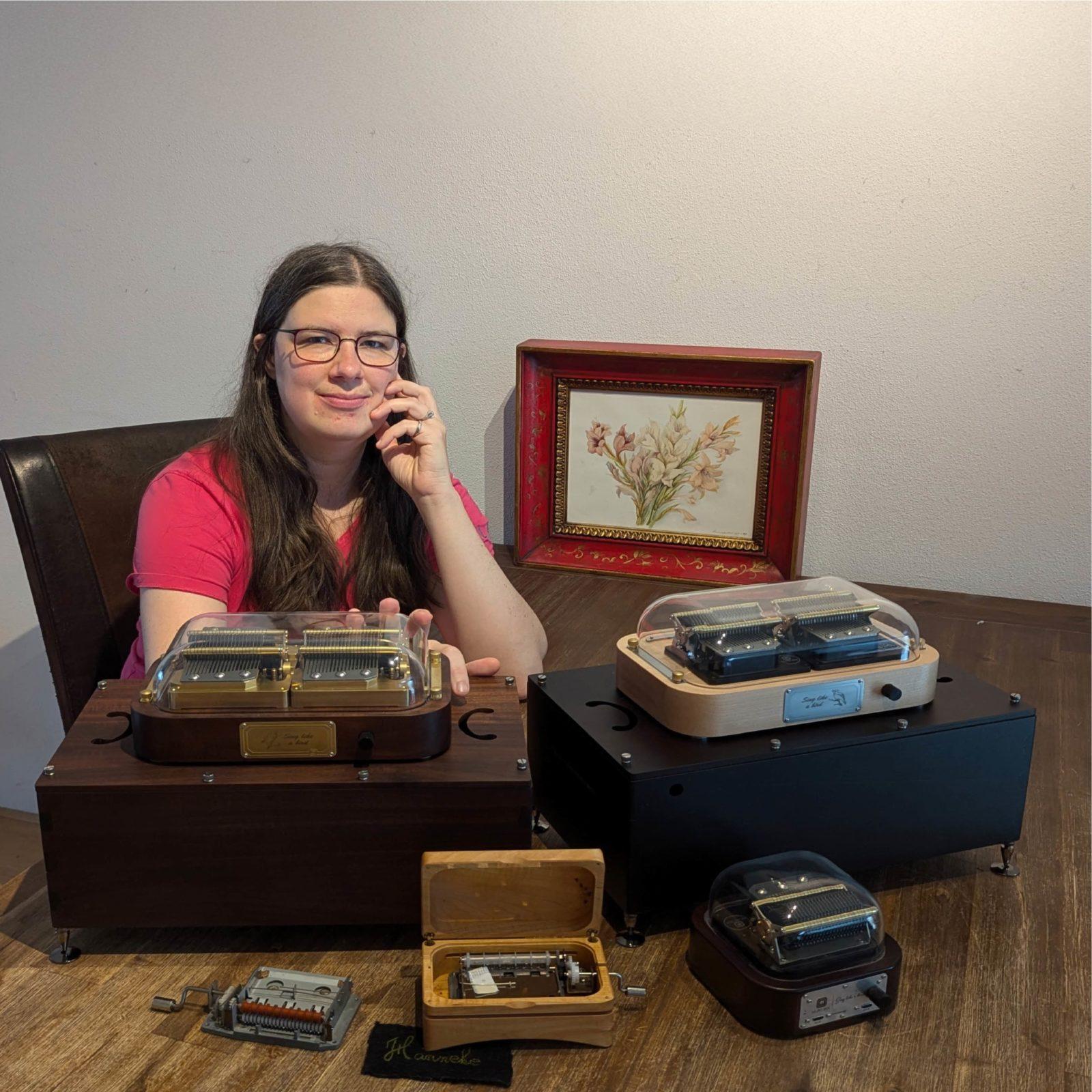
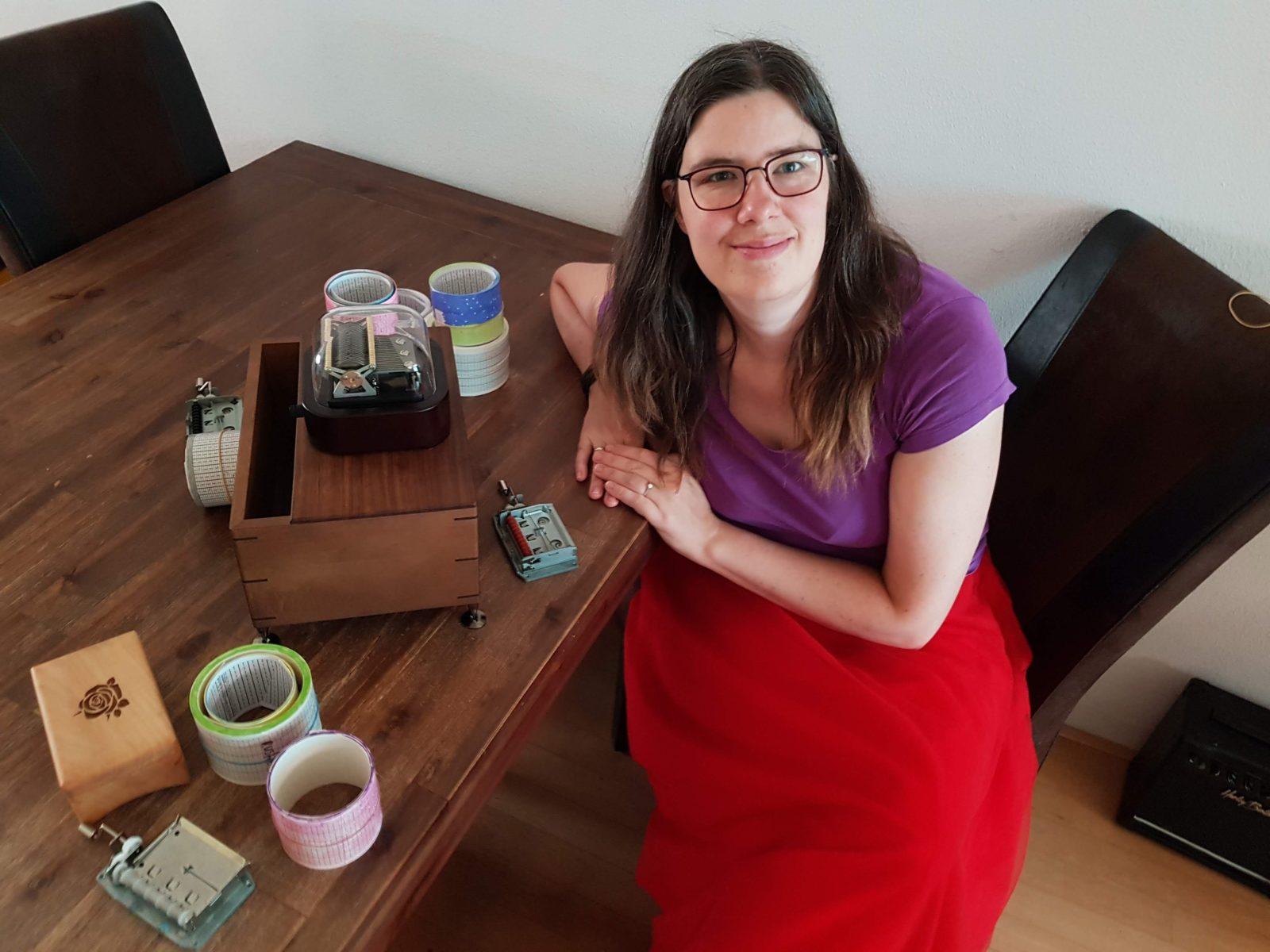
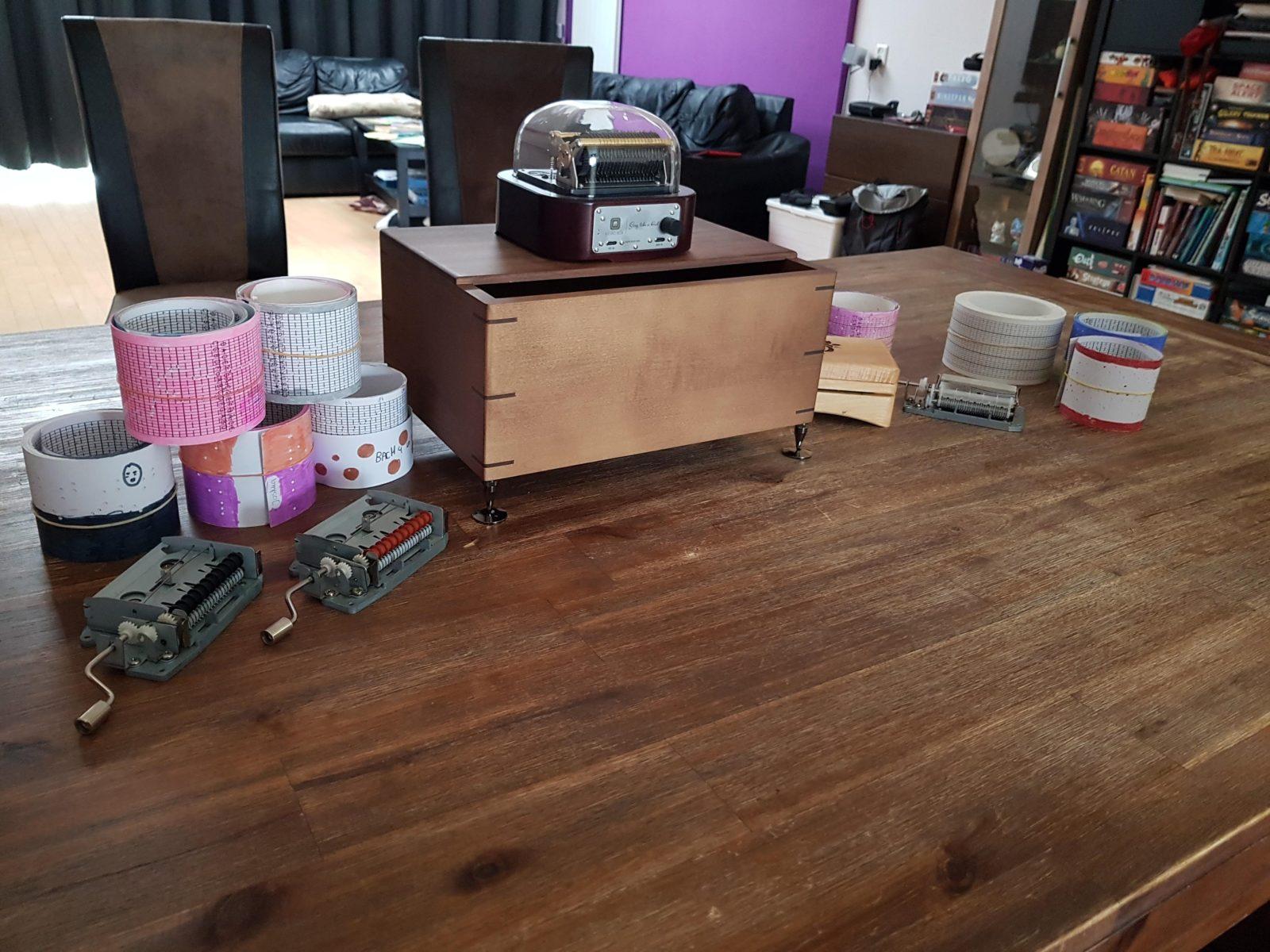
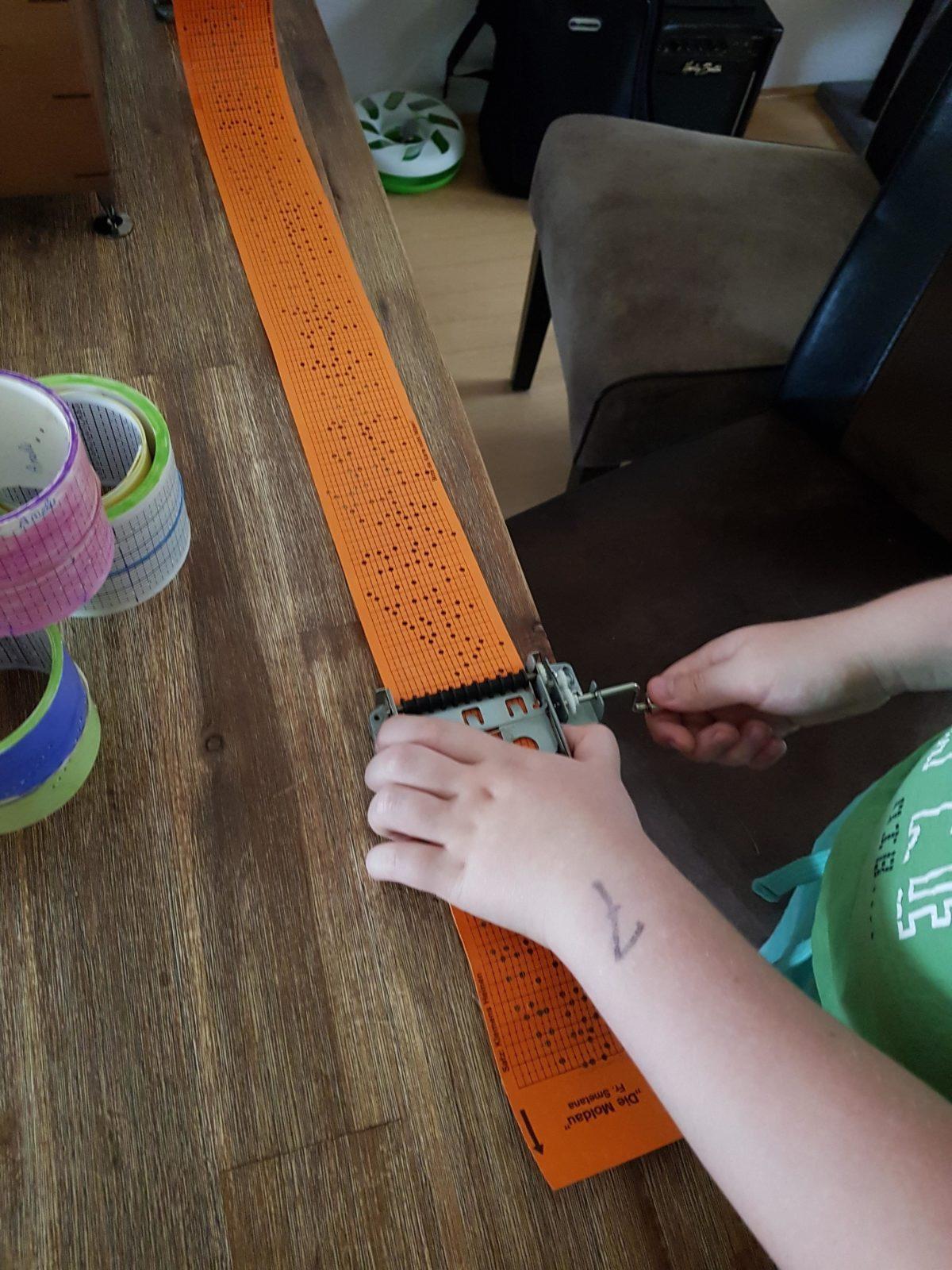
▲A few years later I discovered a hand-cranked music box that worked with paper strips as input, like fairground organs. It had a richer sound than the usual windup music boxes, and I could play any melody on it, if I could punch it into paper. Soon, it was mine, and I punched many paper rolls.
When I was around 10 years old I came across a music box that worked with paper strips, and also fell in love with its sound, as it was much richer than the usual small music boxes. I promptly asked for one for my birthday, and got it.
I spent much of my allowance on preprinted music strips, which I still own – along with that music box. The first song I ever had on the paper-strip music box was an arrangement of Guten Abend Gute Nacht, from Brahms.
When I was older, I looked online to see if I could find more patterns for paper strips, and found a website, Music Box Maniacs, where people could compose and share patterns for these instruments. Ever since, I’ve grown very active again in arranging and composing music for music boxes.
This is all to say: I really love music boxes!
On Music Box Maniacs I learned of a Kickstarter campaign, where the Taiwanese company Tevofy tried to gather funds to develop their app-controlled music box; the Muro Box.
About Tevofy Technology Ltd. and the Muro Box
Tevofy Technology Ltd.is a company created by a husband and wife, Chen-Hsiang Feng and Shiao-Chen Tsai. They had lived in the U.S.A for a number of years for study and work in Silicon Valley.
After some time, they tried to get their own startup going. They had a music box which had an emotional connection for them, and wished aloud that it could play any music that was important to them.
That inspired them to design a music box that could be controlled with an app. The idea was that music could be composed in the app, and it could instruct the music box to play that song. They moved back to Taiwan, which was their country of origin, and also has a thriving music box market. Many of the world’s music box movements are created there.
The story of their journey in designing and creating the music box can be found on their website https://murobox.com/.
It wasn’t an easy journey, because what they did was really new. They didn’t want to create a device with a speaker, but an actual mechanical music box with pins that strike a comb.
They discovered in their design journey that materials and how they are put together matter a lot for the sound and durability of music boxes. They were catching up to hundreds of years of knowledge and craft. But they managed to create a working prototype and took it to crowdfunding websites. The goals were soon met, and production could start.
The first Muro Box could play 20 notes, and was diatonic. Flats and sharps could not be played on it. I bought one as well, and love it deeply. But with its limited scale and notes, a lot of songs were outside its reach. For those reasons, many of the arrangements I made were still for the hand-cranked paper-roll N30.
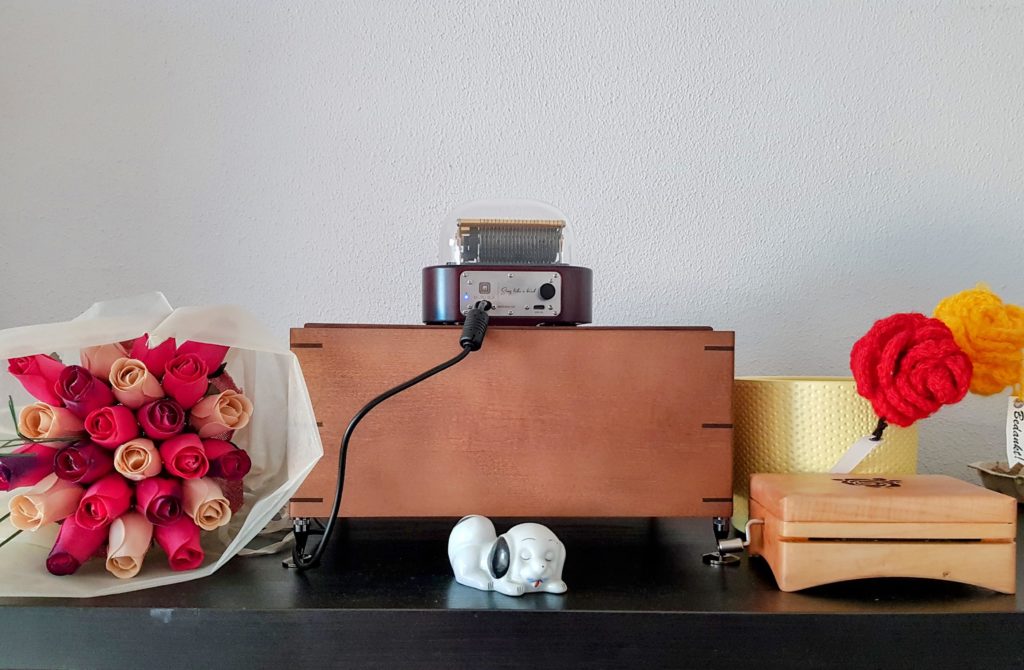
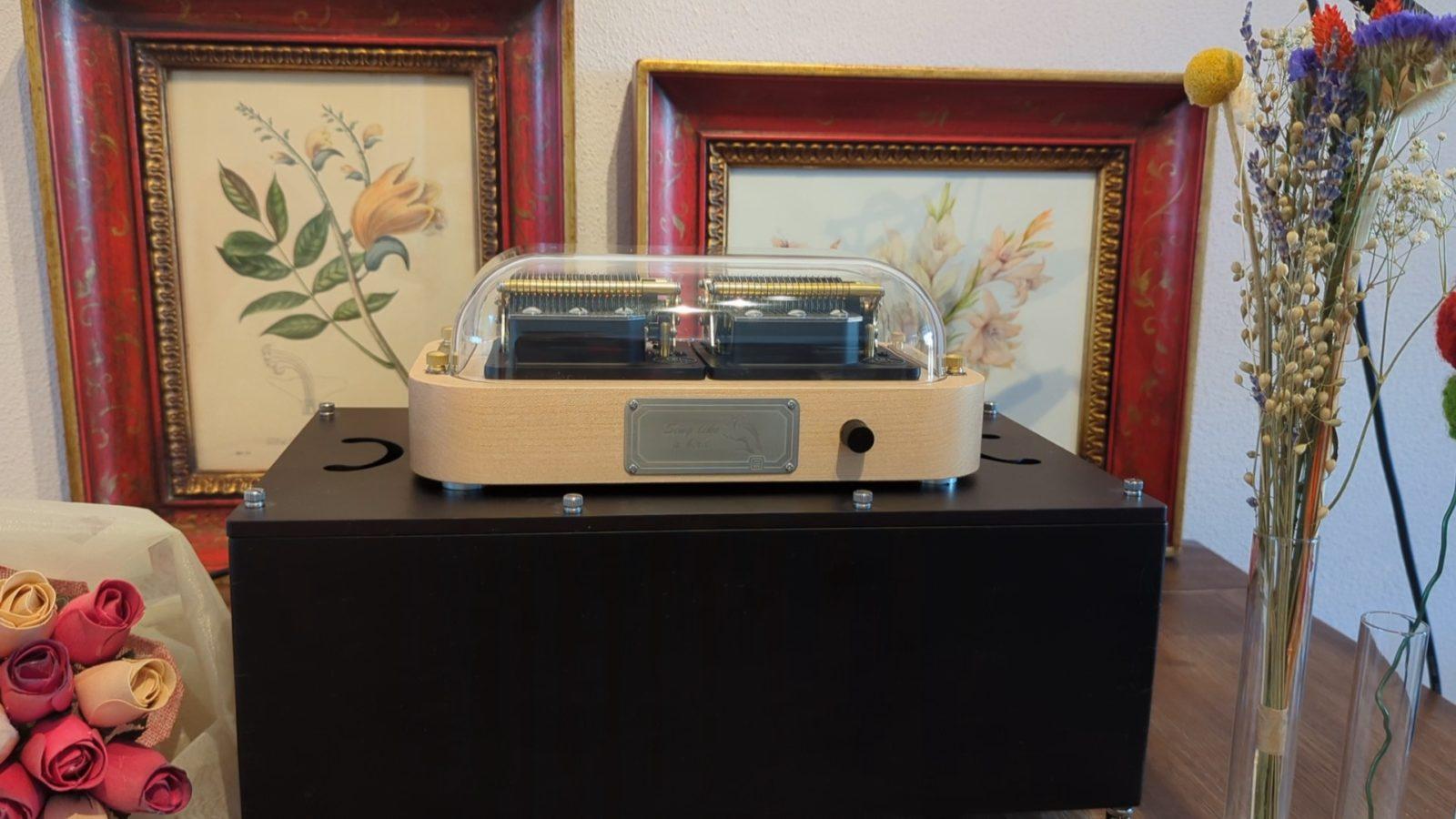
My Muro Box-N40 Standard music box
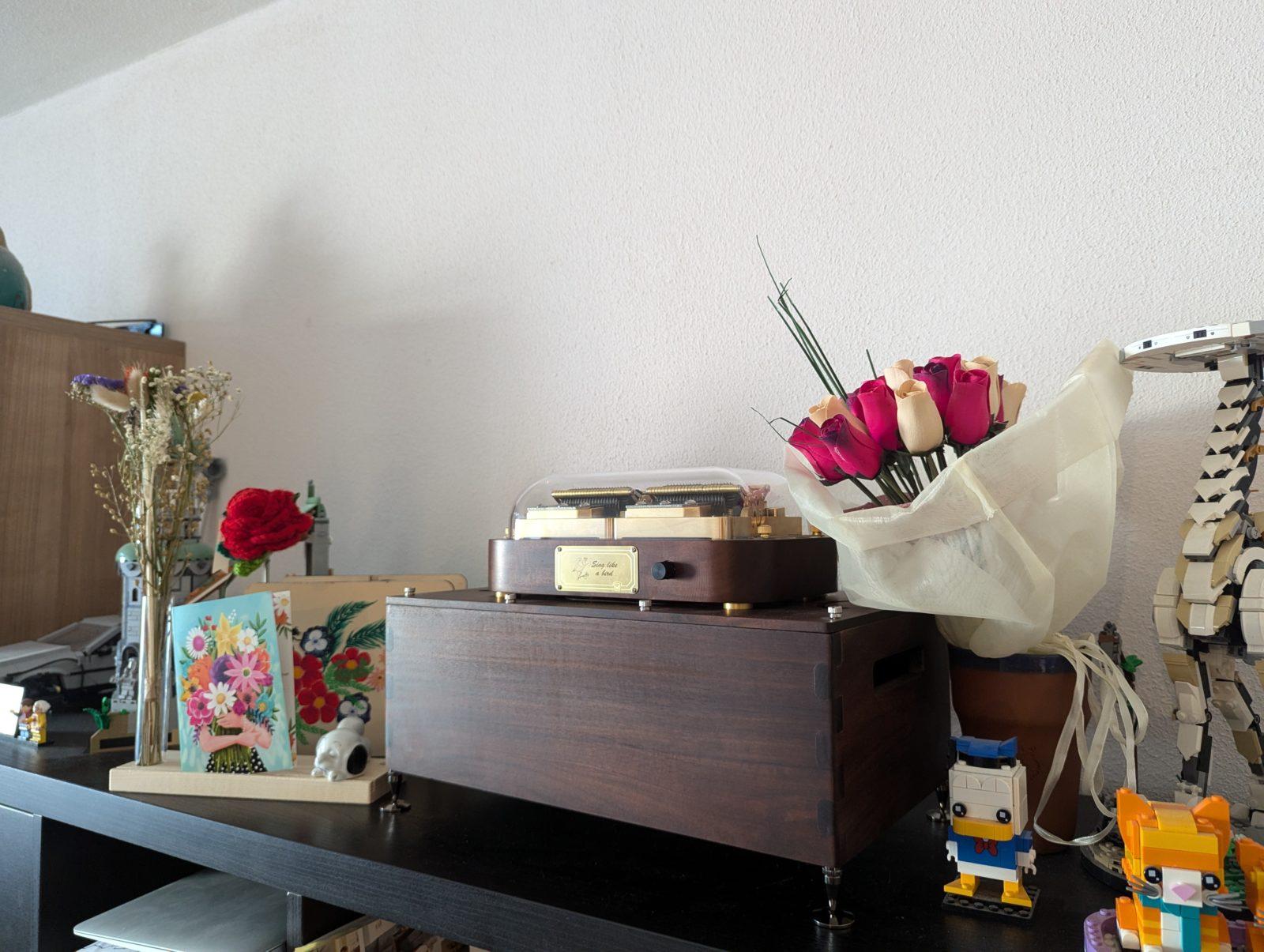
My Muro Box-N40 Sublime music box
So I was overjoyed when I heard that an N40 was in the design stage. A Muro Box with all the notes, and an even larger range than other music boxes I had! I emailed the company to show my interest. Since that time I’ve been in regular contact with them with my own ideas and to give feedback. Another crowdfunding campaign was started, and hit its goal in one day.
At this moment, production is in full swing. Not all backers have their music boxes yet, because the production rate is only a few Muro Boxes a day. The reason is that its assembly is a manual process.
Why do I love the Muro Box?
Many of those songs on paper strips were really well made. Sadly, the name of the manufacturer isn’t present on them, and I have no idea where they came from. It’s those strips that I’m now adding to the Muro Box library.
What I love about the Muro Box app is that I can add the genre of the song, and can search by it. I really miss that feature in the music box maniacs website.
I can turn on the playlist and let its sound fill my living room – just like the music box of my grandfather did. Here are the first two videos of Muro Box N20 and N40, and more will appear on my channel soon:
The reason I chose this song (Camille Saint-Saëns: Le Carnaval des Animaux Aquarium) is in a few parts. First of all, the song consists entirely of arpeggio’s, cascade’s of notes. I’ve been arranging music box melodies for a while, and found that this works really well with the type of sound they have. For the reason I had arranged it before, for the paper roll N30. However,a N30 music box has more limitations than the Muro Box-N40, apart from its more limited range. Another big limitation is how far notes have to be placed apart when they are repeated. Let’s say that the aquarium song consists of waves of note, going up, and going down again. In the N30, I could only make the going up motions. The Muro Box-N40 allows for repeated notes to be placed much closer to each other, allowing me to make a more faithful arrangement.
Then there is the fact that the aquarium was originally composed for a glass harmonica, creating its ethereal sound. The Sublime N40 makes a great match here, with its reverberating sound!
How the Muro works
As stated before, the Muro Box is a music box that is app-controlled. But how does that work?
It starts with the Muro app. In this app you can connect to your Muro Box, browse the melody library and compose your own music. The songs in the app are midi files. This format is basically sheet music for computers, and widely used.
The Muro Box is connected to your wifi. In the Muro app you can select a song, and the app sends instructions to the Muro Box. The Muro Box has one or more combs, and cylinders with pins. The instructions sent by the phone tell the Muro Box when it should move each pin, making them strike the comb. And that is how the Muro Box plays your song.
But you won’t always need an app. The Muro Box also comes with an offline playlist, which you can update. You can just push the single button on the Muro Box, and it starts playing.
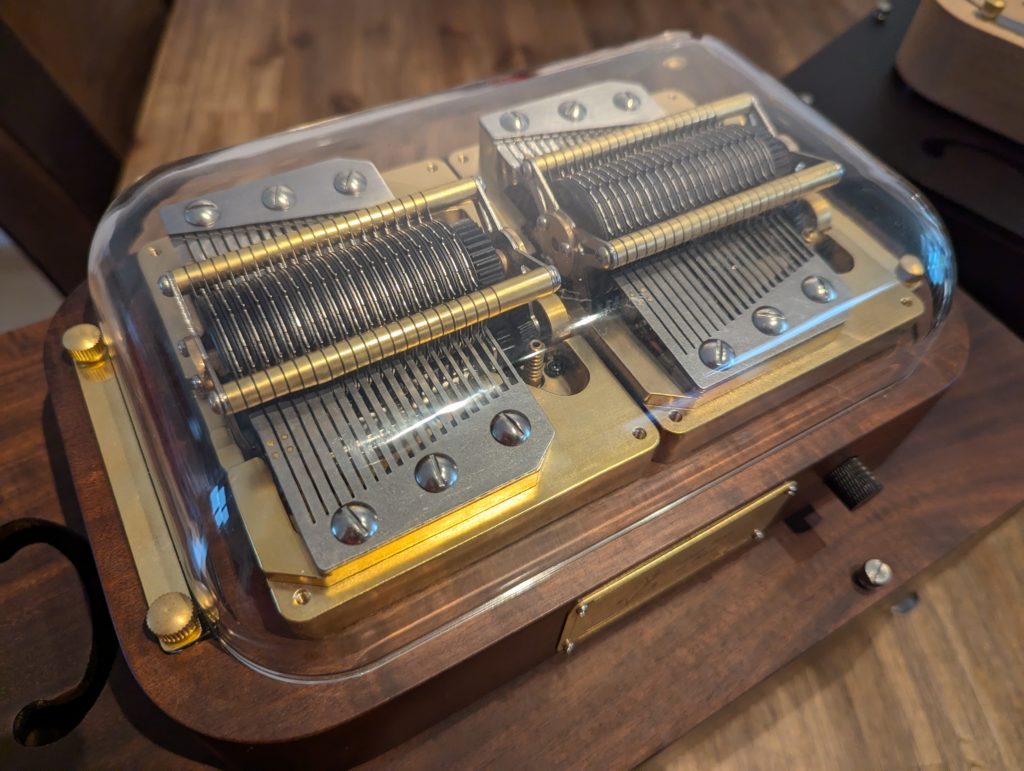
The Music Library & Options
There is already a large library with songs. Many people have busied themselves with creating songs, and the library from Musicbox Maniacs has been imported as well. So even if you don’t know how to create music by yourself, the Muro Box has a lot to offer. On top of that, you can pay to have songs arranged for you, also through the app.
However, if you love composing and arranging music, the Muro also offers a lot. First of all, because the music is in midi format, it’s easy to export or import songs. This means you can also create songs in other programs and apps.
There is also an optional port for midi devices, so if you want to play live on the Muro as an instrument – that is possible! If you want to see more of those possibilities, I recommend looking for the channel Lullatone on YouTube. They have a number of videos where they play with different midi devices on the Muro Box.
The Craft
Any person who plays a music instrument can tell you; materials matter. Different types of wood and metal conduct sound in a different way. During the design process of the Muro Boxes, the creators sent regular updates to their backers. They also gathered feedback on the different materials for the combs, base and sound box.
Also consider that any music box mechanic will produce sounds as all the parts move. The trick is to minimize the mechanical sounds while maximizing the music volume and quality.
The creators threw themselves on these Muro projects with the ambitions of true craftsmen. The components and designs went through many phases of testing. Now that these music boxes are in production, the components are assembled manually, and each one of them is tested before they are sent to a customer.
The N40 added one extra optional feature inspired by old music boxes: The ‘sublime harmony’. In certain old music boxes from the turn of the century like Polyphone and Regina, each comb was placed twice in a music box, where each copy would be slightly out of tune compared with the first one. This creates not a dissonant, but a reverberating sound.
There is also one small detail that I love. When you turn on a regular device, it uses a light or sounds to let you know it’s working. The Muro Box also uses sound as status indicators, but instead of using a beeper, the Muro Box plays chords as system feedback – using its own music playing capabilities.
My Own Experiences
I bought two N40’s. One sublime harmony version, and one regular. When the funding campaign started, I listened to both versions to choose which one I wanted. First I opted for just the sublime harmony version, since it has a rich sound, which closely resembles the big music boxes of old. But I soon changed my mind and opted to have both.
The reason is that some songs sound better on the one, and some on the other. Let’s take classical music for example; many of these pieces benefit from a more grandiose reverberating sound. Many of those pieces were made for an orchestra after all, and having extra body in its sound is great!
But I also have some melodies that are simpler, like childhood songs. On the sublime harmony version they still sound nice, but kind of overdone and overwrought. The standard N40 version leans more towards a simple music box sound, and suits those songs better.
If anyone is considering buying a N40 Muro Box, I suggest they go to:
Listen Online Now
Tap a song to start playback. Then, tap the speaker icon on the live stream to turn on the sound.
And then the package arrived. Now, I had bought a luxury product from a producer that spent attention to details, and it showed!
It was packaged very well, in very thick carton boxes, and plastic caps to protect the corners. The music boxes had been shipped from Taiwan to the Netherlands, and the music boxes themselves had not a single scratch or blemish to show for it.
The actual products package inside was gorgeous. The carton was black with a golden print on it. The way the music boxes were packaged was also really smart. The sound boxes were used as a box to put the music box inside. The screws which kept the lid closed could be taken out easily, and be refastened with just as little effort. The size of all the packaging materials was perfect in size so there was no room for the music box and other items to rummage around.
Wherever you are on the world, your music box will arrive safely!
The reason I go into this detail is also because there is another long-term benefit. If you want to take your Muro Box to another place, it’s easy to pack it up and transport, even without most of the packaging materials.
The sound box needed a small bit of assembly, but it was very easy and quick. Connecting the Muro Box was effortless as well, it really is just plug and play.
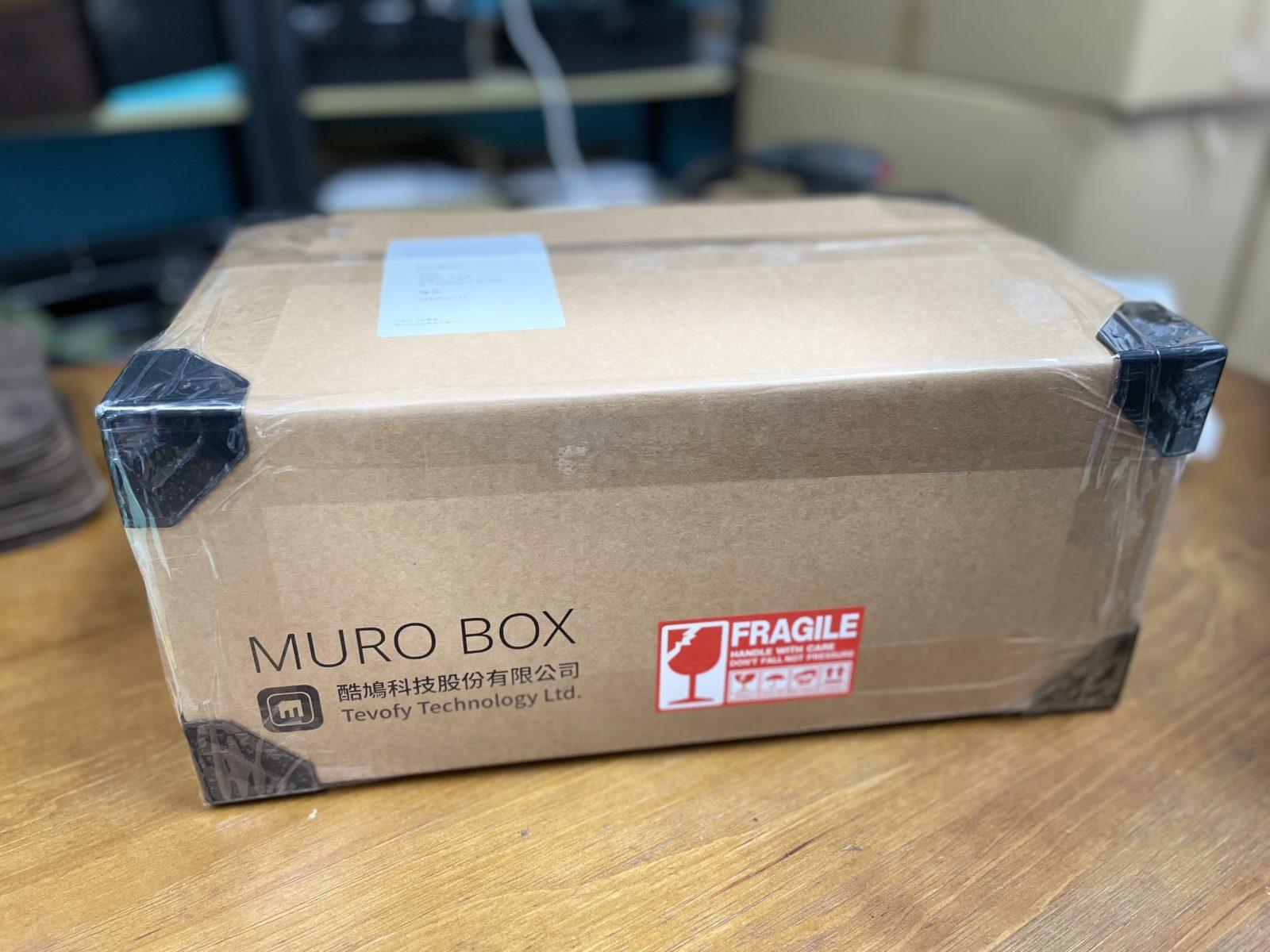
The packaging for the Muro Box-N40 music box includes corner protectors, ensuring the music box arrives safely from Taiwan to the Netherlands without any damage.
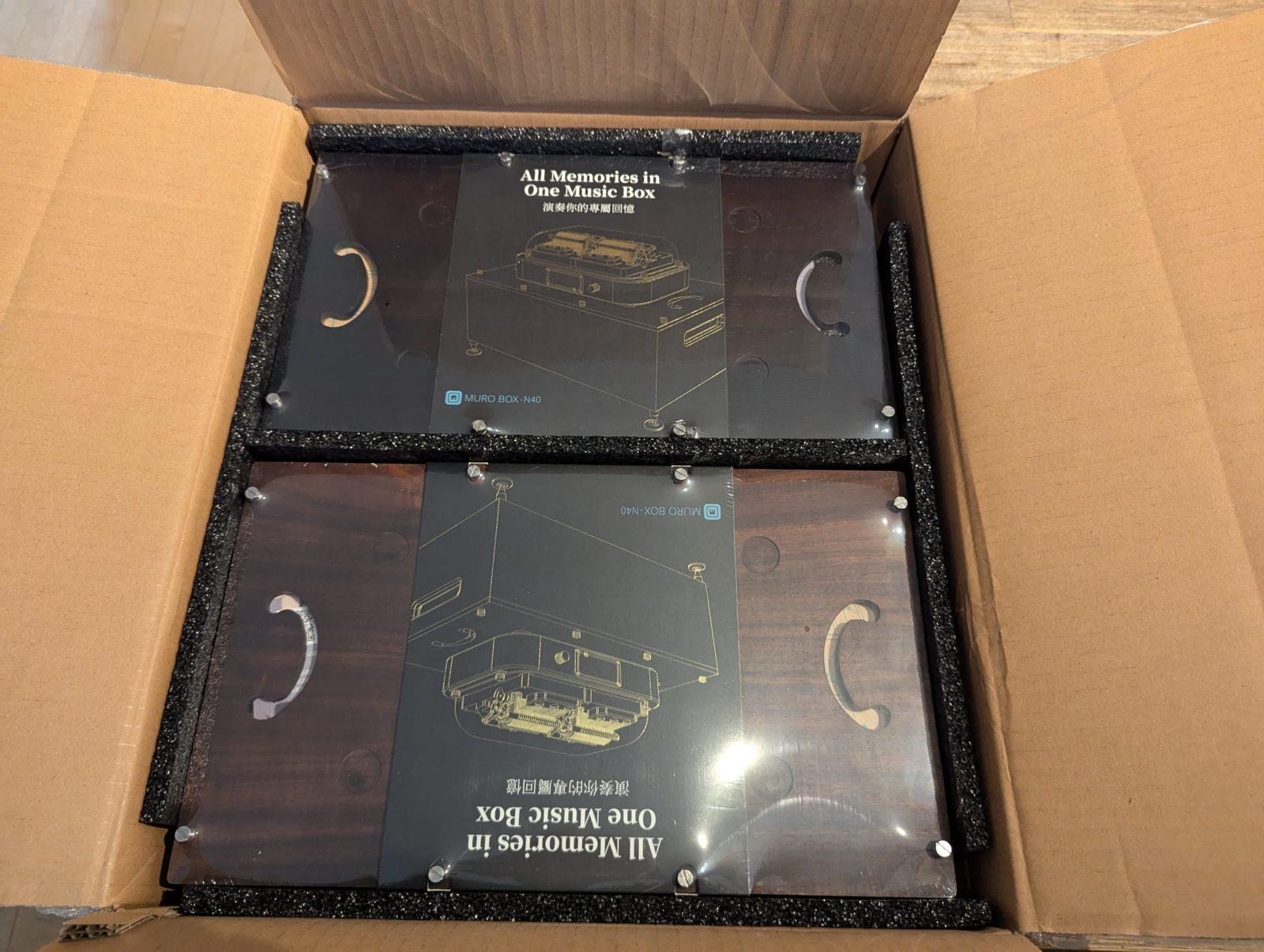
They packed the Muro Box-N40 Sublime music box and the N40 Standard music box together in a large cardboard box and shipped it to me.
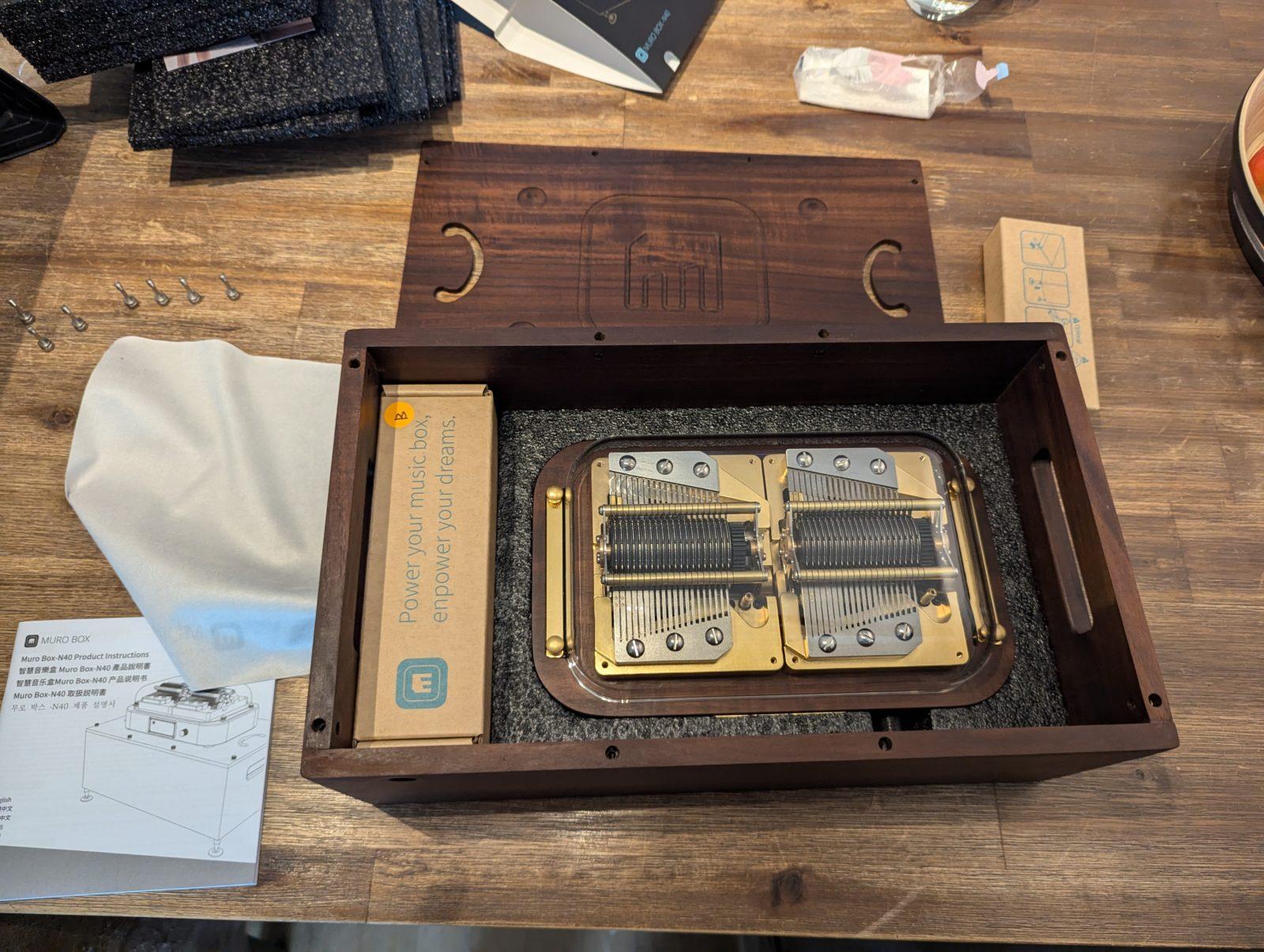
This is what it looked like when I opened the resonance box that contained my Muro Box-N40 Sublime music box.
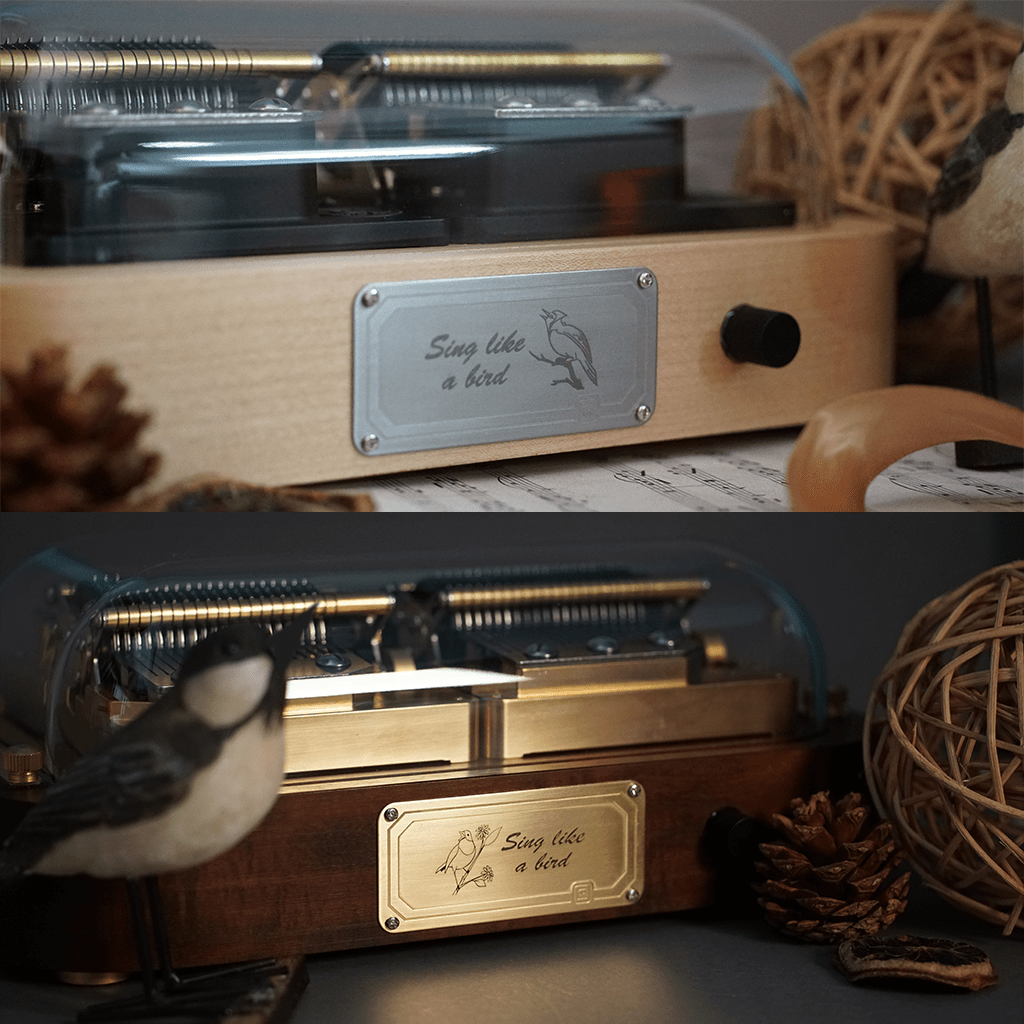
In the ordering process I could also supply images and text to be engraved on a small metal plate on the music box. I was also pleased with how good they looked.
The Muro Boxes are great to look at, and make for wonderful pieces to put in any room. The mechanics are beautiful and intricate, especially when they move. There is a joy in seeing a mechanical device at work.
The music they play is beautiful and fills the entire room. It’s not a soft tinkling toy, but a true instrument.
The volume it has also has another benefit; you can let it play with other instruments in an ensemble. I’m working on a duet between a Muro and a Piano at this moment.
I love making new melodies for this, and experimenting with its capabilities. My son has also downloaded the app, and started experimenting with it. The app is very easy to use, and it’s a great way to start composing music for anyone! I’m also looking forward to record more melodies on this device and share them on YouTube.
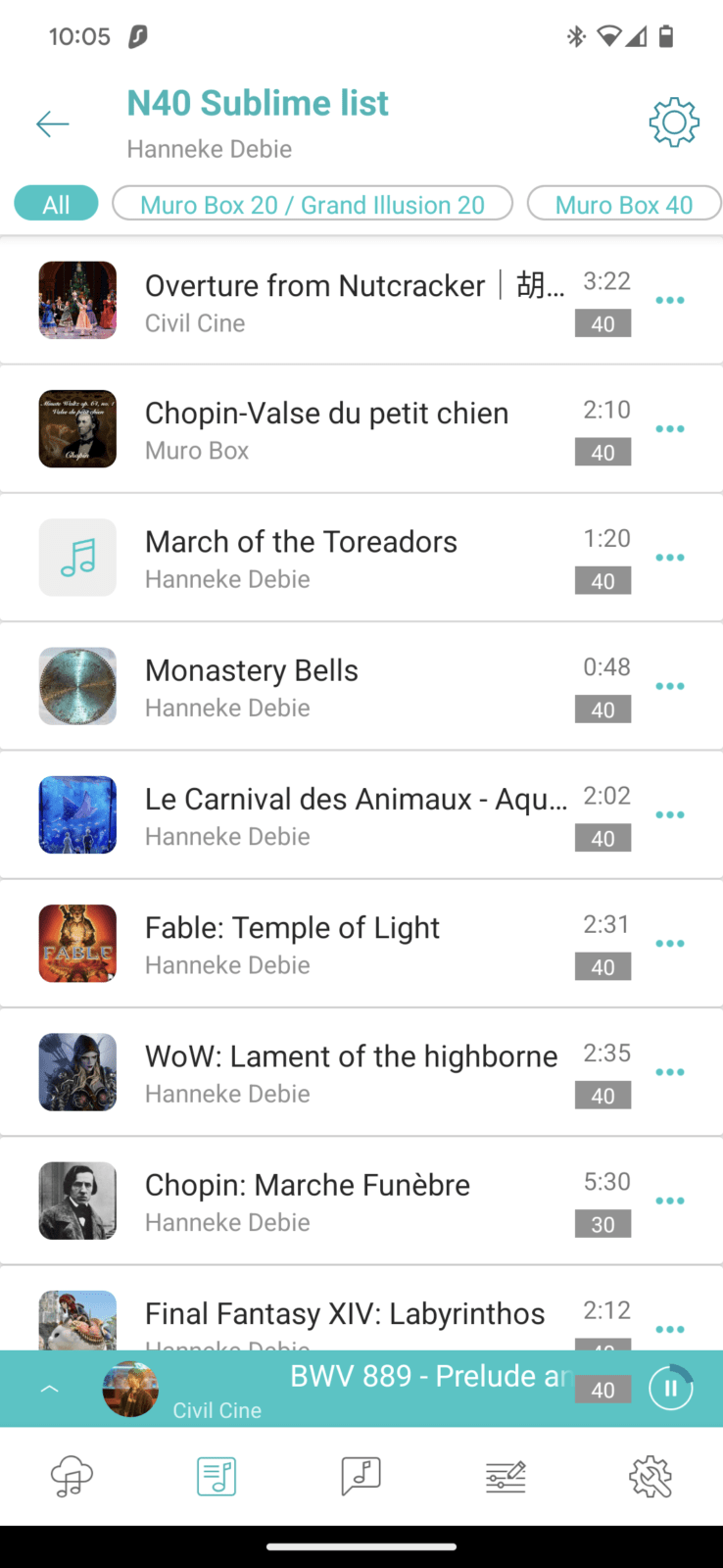
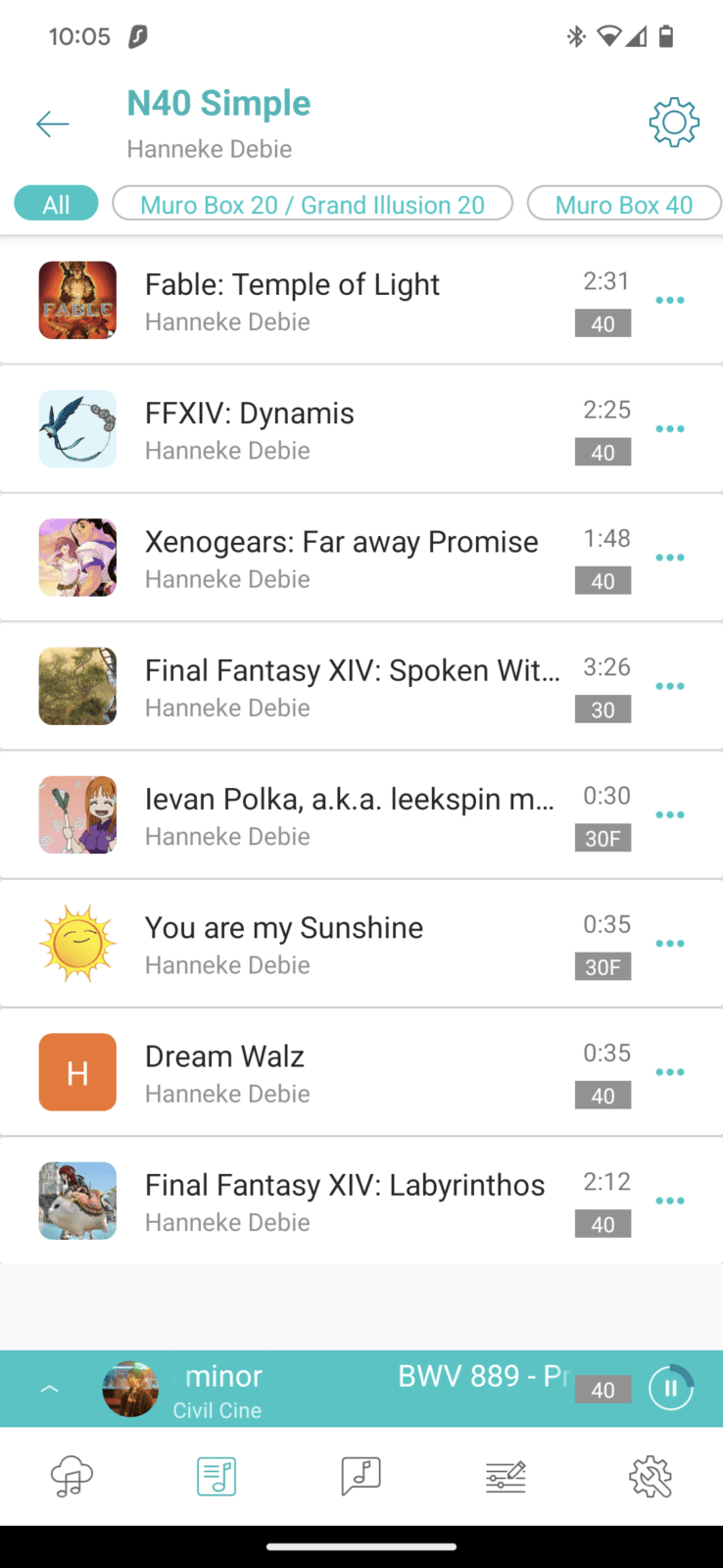

Would it be something for you?
The Muro Box is a great instrument, well designed, great materials, handcrafted and easy to use. This is not a gimmick or a toy, but a high-quality instrument. But it also has a price tag to match. When I look at Indiegogo, where an order can still be placed, the price is $1224 for a normal N40, and $2244 for the sublime. This is a lot of money. But on the other hand, if you’d buy another large music box, like a new Reuge, or an antique regina, you’re paying much more.
So if you’re looking for a high quality music box, The Muro Box is a really great pick! It has the look, the sound, and a lot of versatility.
